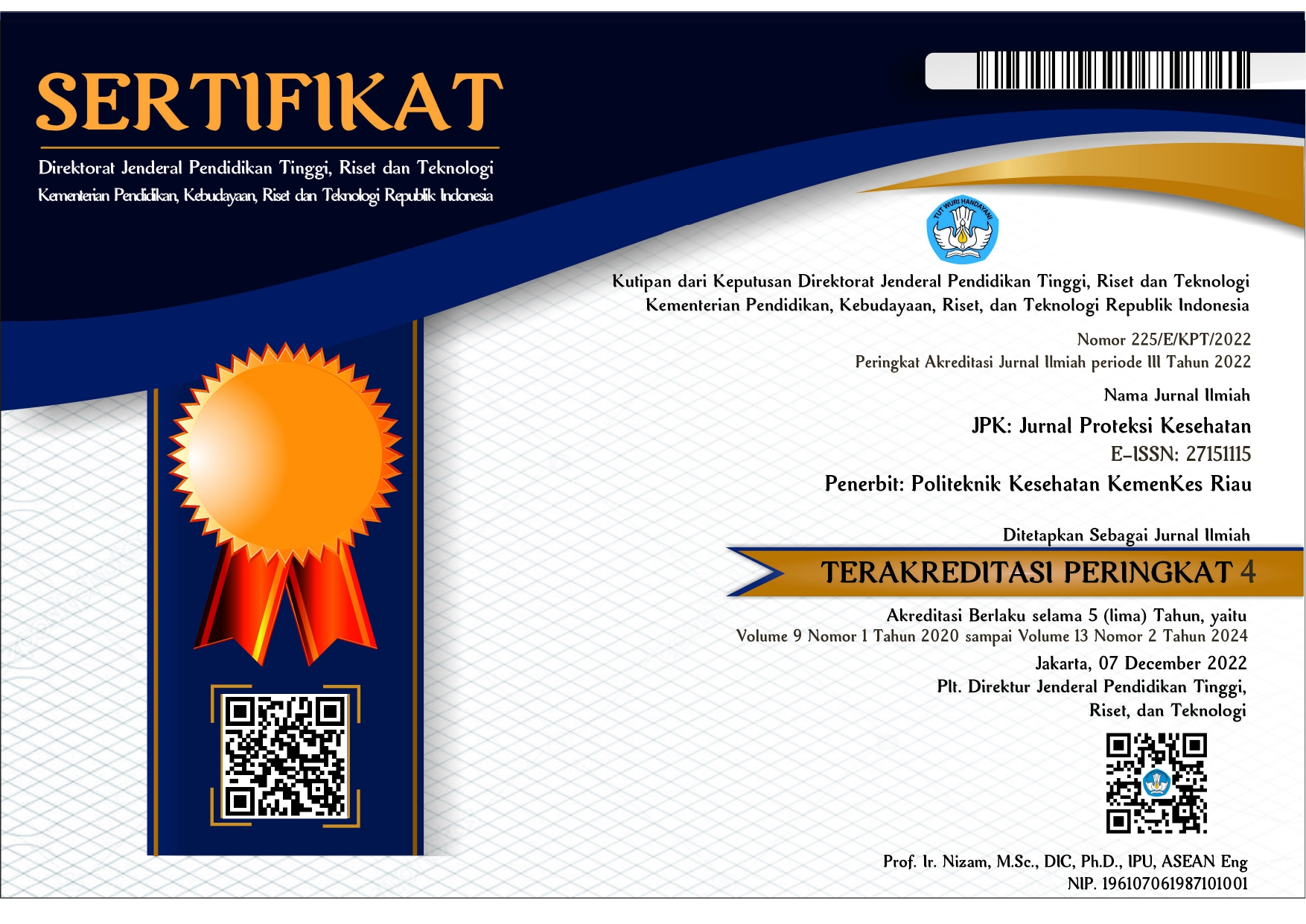Shredded Catfish (Pangasius hypophthalmus) as a Source of Protein in Balado Seasoning
Abstract
Protein is the most important nutrient for our body, because as a source of energy, protein alsoas a body-building substance, a regulatory substance in the body. In addition to building blocks, its main function for the body is to form new tissues (for example forming a fetus during a mother's pregnancy or new tissues during a child's growth process), as well as maintaining existing tissues or replacing parts that have been damaged. Balado seasoning is a food additive that is used as a flavoring to improve the taste of snacks, and shredded catfish is processed from catfish that contains protein so that it can be a source of protein for the body. The purpose of this study was to determine the protein content in balado seasoning with the addition of shredded catfish. Quantitative assay of protein was carried out by the Kjeldahl method, with three stages, namely destruction, distillation and titration. The samples used were samples of balado seasoning and shredded catfish. Balado seasoning does not contain protein as stated on the packaging. In this study, it was found that the protein content of the balado seasoning sample added with shredded catfish was 21,90% and the shredded catfish itself had a protein content of 33,89%. The results obtained in the analysis of protein levels in the balado seasoning after the addition of catfish shredded were higher than the balado seasoning without the addition of catfish shredded before processing.
References
[2] Badan Standarisasi Nasional, “Makaroni. SNI 01-3777-1995,” Jakarta, 1995.
[3] S. Dwiari, Teknologi Pangan, 2nd ed. Jakarta: Direktorat Jendral Manajemen Pendidikan Dasar dan Menengah., 2008.
[4] D. Suryaningrum, “Ikan Patin: Peluang Ekspor, Penanganan Pascapanen, Dan Diversifikasi Produk Olahannya,” Squalen, vol. 3, no. 1, 2008.
[5] Sundari, R. Siti, A. Kusmayadi, and D. S. Umbara, “Komparasi Nilai Tambah Agroindustri Abon Ikan Lele Dan Ikan Patin Di Tasikmalaya,” J. Pertan. Agros, vol. 19, no. 1, pp. 45–54, 2017.
[6] H. Khairuman and Khairul, Budi Daya Patin di Kolam Terpal. Jakarta: PT Agro Media Pustaka, 2010.
[7] Mahyuddin, Panduan Lengkap Agribisnis Patin. Jakarta: Penebar Swadaya, 2010.
[8] Rahmawati, “Kandungan Protein Terlarut Daging Ikan Patin (Pangasiusdjambal) Akibat Variasi Pakan Tambahan,” Universitas Jember, 2013.
[9] Huthaimah, Yusriana, and Martunis, “Pengaruh Jenis Ikan dan Metode Pembuatan Abon Ikan terhadap Karakteristik Mutu dan Tingkat Penerimaan Konsumen,” J. Ilm. Mhs. Pertan., vol. 2, no. 3, pp. 244–256, 2017.
[10] Argo, B. Dwi, Y. Sugiarto, and A. B. Irianto, “Analisis kandungan abon ikan patin (Pangasius pangasius) dengan treatment alat ‘spinner pulling oil’ sebagai pengentas minyak otomatis.,” J. Keteknikan Pertan. Trop. dan Biosist., vol. 6, no. 1, pp. 52–62, 2019.
[11] Suryani, Membuat Aneka Abon. Jakarta: Penebar Swadaya, 2007.
[12] Badan Standarisasi Nasional, “Cara uji makanan dan minuman. SNI 01-2891-1992 (7.1),” Jakarta, 1992.
[13] F. . Ora, Buku ajar Struktur dan Komponen Telur. Jogyakarta: CV. Budi Utama, 2015.
[14] T. Estiasih and Ahmadi, Teknologi Pengolahan Pangan, 1st ed. Jakarta: Bumi Aksara, 2009.
[15] H. Rosaini, R. Rasyid, and V. Hagramida, “Penetapan Kadar Protein Secara Kjeldahl Beberapa Makanan Olahan Kerang Remis (Corbiculla Moltkiana Prime.) Dari Danau Singkarak,” Farm. Higea, vol. 7, no. 2, pp. 120–127, 2015.












